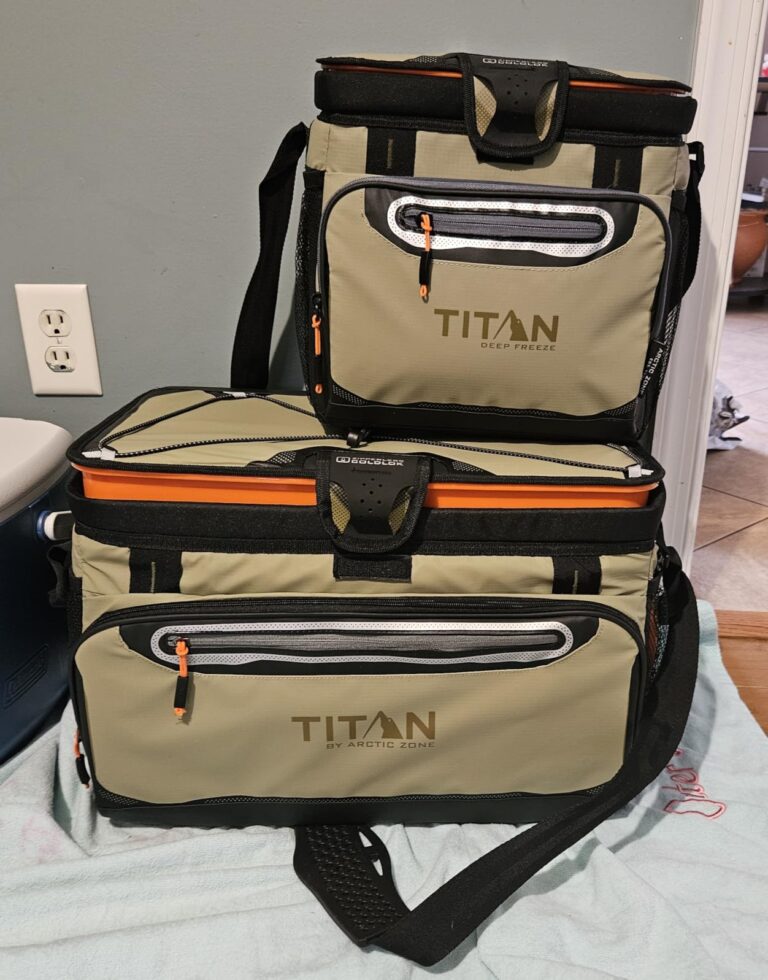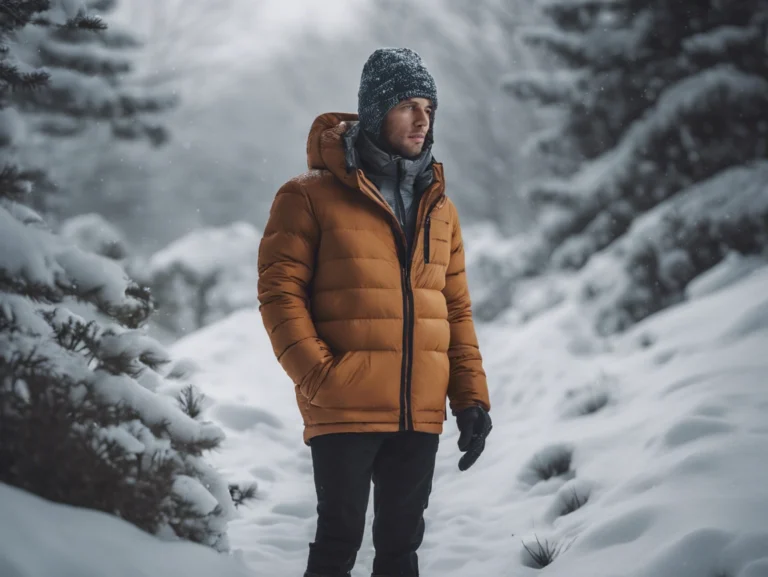It is a good idea to wear that oversized, bulky jacket on your winter walk to keep you cordial and protect you from the weather. In reality, the most efficient strategy to protect oneself from the cold is to dress in layers that may be added or withdrawn depending on the weather. This article will be the perfect step-by-step guide on How to Layer Clothing to Keep Warm.

The “layering system” is a way to wear clothes in layers to stay warm and comfortable outside. This could help you stay warm or cool off. People usually only talk about layering tops and jackets, but you can also layer leggings and pants the same way. Most hikers, climbers, snow sports fans, and others who like to be outside will use a sound layering system.
How to Layer Clothing to Keep Warm; How Does It Work?
When you wear several thin layers, warm air gets trapped between them and acts as an insulator, keeping you more generous than a single thick layer. Then, less heat would be trapped if you took off a layer, making you feel cooler.
When you use a layering system, you can be ready for many different things that could happen. If the weather is good before you leave, you can pack clothes that keep you warm and dry while wearing a base layer. You won’t get too hot; if the temperature drops or it starts to rain, you’ll be ready.
The Base Layer
The base layer is the first layer in your system of layers. The main job of the base layers is to pull moisture away from your skin. This helps keep your body temperature stable and keeps you comfortable. Usually made of merino wool or fleece, your base layer should dry quickly, soak up moisture, and wick it away.
Base layers can also be made of polyester shirts that dry quickly. Material made of cotton should be used if it takes a lot longer to dry than wool or polyester. If you plan on performing any water sports, polypropylene is advised since it will keep you warm even if it gets wet and will dry rapidly.

The underwear you wear is also a base layer. Don’t discount it too much because it’s also part of the equation. So, be careful about what you wear under your clothes.

The Middle Layer
You need more than the warmth you get from your base layer when it’s icy. To keep body heat in even better, you must layer your clothes with a middle layer. The insulating layer is the one that gets put on and taken off the most.
Down keeps you warmer and is easier to pack than synthetic fiber. But when it gets wet, it doesn’t keep you as warm or get rid of smells. So, it is suggested for people who do moderate or low-intensity activities or take many breaks while doing them.
The insulation of the down in the middle layer is guaranteed by how much air it can take in per cubic inch. This index, called “fill power,” usually ranges from 650 to 850. The higher the fill power, the less air the down will take in. This will keep you warmer in the cold.
Outer Shell Layer
The most crucial layer of your wardrobe is the outermost layer since it protects all the other layers. A sticky middle layer will not keep you warm, but a functional outer shell will cover all your center and inner layers and keep you comfortable and safe throughout your exercise. Your outer shell should be big enough to accommodate all your layers, so you may need to size up when purchasing the coat. It should also be entirely waterproof to protect the secondary layer, which is less waterproof. Water, as previously said, is particularly damaging to your health in cold weather.
How to Layer Clothing to Keep Warm; The Base Layer Be Made Of
You can go with synthetic fabric or natural fabric. Wool, or merino wool, is the most common natural choice. This excellent fibre keeps heat in and gets rid of sweat. It also doesn’t smell, lets air in, and keeps you warm even when wet.
But it doesn’t last very long, so synthetic fabrics are often combined with strengthening clothes.
The least expensive choice is a base layer made of synthetic fabric, like polyester or nylon. Nylon is stronger and lasts longer than polyester, but it costs more. Both wick away sweat and keep body heat in, but they can start to smell after a while. Synthetic clothes that cost more will also be able to breathe and dry quickly.
You should always choose a close-fitting synthetic or natural garment because it will help keep your core temperature more stable.
How to Layer Clothing to Keep Warm in Cold Weather
- Waterproof Jackets
When dressing for cold, wet weather, it’s just as important to stay dry as it is to keep the cold out. Whether it’s raining, windy, or cold, you need a winter jacket that won’t let water in. Wind and rain can’t get through a waterproof jacket, whether insulated or just a shell for another layer or two.
- Insulated Jackets
When the wind chill drops, an insulated jacket, often made with eco-friendly materials like recycled down, is a great piece to layer. If the weather is clear and cold, puffer jackets keep your body heat in and feel light and fluffy.
- Picking the Jacket for You
Having a few winter jackets for different things in your closet is good. A day on the slopes may need a waterproof, insulated jacket, whilst a day in the city may necessitate a fashionable puffer jacket or a heavy bomber to complete your style. In general, the longer the jacket, the warmer you’ll be. However, shorter jackets are better for days when you want to move around a lot. Find out how to wear layers to stay warm no matter what you’re doing.
Are Soft-Shell Jackets Good For Winter?
In the fall and spring, fleece mid-layers are the best to wear. They offer light and thin insulation that doesn’t take up much space. But in the winter, you might need more warmth from your middle layer. Soft-shell jackets are ready to go.
Soft shells combine the features and technologies of the hard-shell layer and the fleece layer to make a mid-layer that can do everything. They are not waterproof, but many of them are windproof. They usually have a waterproof layer over the shoulders or a treatment that makes the fabric waterproof. They are made to be worn while doing things, so they are breathable, wick away sweat, and dry quickly.
And they usually have lightweight insulation, usually made of synthetic materials, either all over the jacket or the core, where you need it the most. As a result, they can be worn with many different things and are a good investment. They may even serve as your primary outer jacket on warmer, dry days.
How to Layer Clothing to Keep Warm; Avoid These Layering Mistakes
You should correct some things as you learn how to layer clothes. Here are some of the most typical mistakes you should not make:
- Relying on one oversized jacket
Instead of two or three mid-layers to keep you warm. What should you do when you start sweating? Take off the only jacket you have and get cold? Coatings protect you from sudden temperature changes. The goal is to remain warm and dry while you’re outside.
- Forgetting face protection
You did remember to wear gloves, gaiters, and a hood to protect your hands, feet, and head. But when the wind blows in your face, you won’t think about how warm your toes are. Bring a gaiter or balaclava to keep everything warm and stop frostbite.
- Layering too much
You want to stay warm but avoid sweating so much that you soak your base layers. When you stop to rest or get to the campsite, the wetness will make you too cold. The key is three to four layers. If you’re cold at the trailhead, don’t worry. As soon as you start moving, you’ll warm up quickly.
- Wearing cotton or cotton blends
When you sweat, cotton soaks up the moisture and stops keeping the air away from your skin. People say “cotton kills” because it’s easy to get cold and lose body heat when you wear it. No matter how good you are at layering clothes, if any of your layers are cotton, you should avoid wearing them on winter hikes.
Final Words
This guide explains How to Layer Clothing to Keep Warm. We will make every step to ensure that you understand this tutorial. We hope you like this article. Please stay in touch if you continue to have problems with anything.














